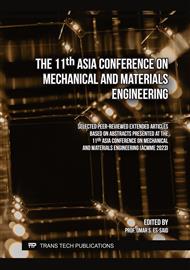p.11
p.17
p.23
p.31
p.37
p.45
p.59
p.67
p.85
Change in Material Behavior due to Use of Functional Novel Yarn Compositions
Abstract:
Comfort, protection and similar characteristics, which have become imperative for the production of sportswear materials, constantly encourage the textile industry and researchers to search for new innovative solutions. Recently, there are three main areas that scientists focus on - comfort, functionality and aesthetic appeal of sportswear. For the purpose of this research, a set of novel yarns is selected and used to design knitted materials intended for the production of functional sportswear. In this paper the changes in the material properties due to the use of different novel yarn compositions are observed. Regarding the material properties, the mass loss due to the material abrasion, and water vapour transfer rate were measured and analysed. The results of the investigation indicated that the material with the lowest mass, thickness and densities (both horizontal and vertical) exhibit the lowest decrease of mass due to abrasion. The highest decrease of mass is confirmed for the most compact material composed of viscose, polyester standard and elastane. It was further confirmed that the highest water vapour transfer rate exhibits the material that has the lowest density.
Info:
Periodical:
Pages:
37-44
Citation:
Online since:
December 2023
Keywords:
Price:
Сopyright:
© 2023 Trans Tech Publications Ltd. All Rights Reserved
Share:
Citation:



